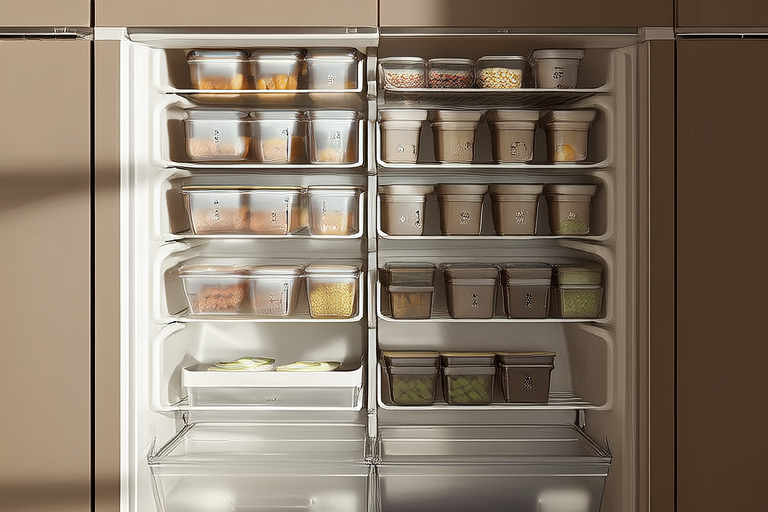Best Practices for Organizing Your Freezer: Efficient Cold Storage Solutions Explained
Introduction
A well-organized freezer is not just a space-saver; it’s also a time-saver. Imagine being able to quickly find the ingredients you need without rummaging through layers of frozen food. Proper organization in your freezer can prevent waste, save money, and reduce stress during meal preparation. In this article, we’ll explore best practices for organizing your freezer, offering efficient cold storage solutions that will make your kitchen life easier.
The Importance of Proper Freezer Organization
Before diving into specific tips, let’s understand why an organized freezer matters. A cluttered freezer can lead to wasted food, as items get lost or forgotten. This not only increases grocery bills but also contributes to unnecessary environmental waste. Additionally, an organized freezer allows for better inventory management, enabling you to plan meals more efficiently. By keeping track of what you have on hand, you can avoid buying duplicates and make better use of leftovers.
Maximizing Space Utilization
One of the key aspects of freezer organization is maximizing space utilization. Many people underestimate the potential of their freezers due to poor planning. Here are some strategies to help you make the most of every inch:
- Use Shelves and Dividers: Install adjustable shelves or dividers to separate different types of food. This prevents items from falling over and helps maintain organization.
- Utilize Baskets and Containers: Store smaller items like herbs, spices, or condiments in baskets or containers. These can be easily moved around, making it simple to access what you need.
- Label Everything Clearly: Labels are crucial for maintaining order. Use durable labels that won’t fade or peel off, and include dates so you know when items were added.
Categorizing and Grouping Items
Categorizing and grouping similar items together is another effective way to keep your freezer tidy. Consider these categories:
- Meat and Poultry: Keep raw meats at the bottom to catch any drips. Frozen vegetables can go above them.
- Dairy Products: Place dairy products like ice cream and frozen yogurt in a dedicated section.
- Baked Goods: Store bread, pastries, and other baked goods in airtight containers to prevent freezer burn.
- Soups and Sauces: Use clear containers to store soups, sauces, and stews. Labeling each container with contents and date helps in quick identification.
Maintaining Temperature Consistency
Temperature consistency is vital for preserving the quality of frozen foods. Fluctuations in temperature can cause food to thaw and refreeze, leading to freezer burn and spoilage. To maintain optimal conditions:
- Keep the Door Closed: Frequent opening and closing of the freezer door causes temperature fluctuations. Try to limit trips to the freezer and batch your tasks.
- Regularly Defrost: Over time, frost builds up inside the freezer, reducing its efficiency. Regular defrosting ensures that your freezer operates at peak performance.
- Check Temperature Settings: Ensure your freezer is set between 0°F (-18°C) and 5°F (-15°C). This range provides adequate freezing while minimizing energy consumption.
Practical Tips and Case Studies
Case Study: Family Meal Planning
Let’s consider a family that plans meals weekly. They freeze pre-portioned meals, ensuring they always have something ready to cook. Here’s how they organize their freezer:
- Preparation: Each Sunday, they prepare several meals and portion them into individual serving sizes.
- Storage: Meals are stored in labeled containers, with each container marked with the name of the dish, cooking instructions, and the date it was prepared.
- Rotation System: They follow a first-in, first-out (FIFO) system, using older meals before newer ones to minimize waste.
DIY Freezer Organization Tools
Creating custom tools can enhance your freezer organization. For example:
- Freezer Paper Bags: These are ideal for storing bulk items like fruits, vegetables, and grains. They’re moisture-resistant and prevent freezer burn.
- Silicone Ice Cube Trays: Instead of buying commercial ice cubes, make your own using silicone trays. You can add herbs, spices, or even small portions of sauces to these trays for easy access later.
Summary and Actionable Steps
In summary, organizing your freezer effectively involves maximizing space, categorizing items, and maintaining consistent temperatures. By implementing these strategies, you can streamline your meal preparation process, reduce food waste, and save both time and money.
Actionable Steps:
- Assess Your Freezer: Take stock of what you currently have and identify areas for improvement.
- Implement Shelves and Dividers: Install adjustable shelves or dividers to separate different types of food.
- Label Everything: Use durable labels to mark each item with its contents and date.
- Maintain Temperature Consistency: Limit trips to the freezer and regularly defrost to ensure optimal conditions.
- Plan Ahead: Incorporate meal planning into your routine to take full advantage of your organized freezer.
By following these steps, you’ll create a freezer environment that’s not only efficient but also enjoyable to use. Happy organizing!
